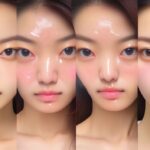Do you wish your smile could be brighter? Are you tired of the dullness that tarnishes your teeth? Coronal polishing might be the solution! This dental procedure can give your teeth a sparkling glow, boosting your confidence. Let’s explore the world of coronal polishing and discover how it can transform your smile.
Enhancing Your Smile: The Power of Coronal Polishing
Coronal polishing, sometimes called a prophy, gently removes surface stains and plaque, revealing smoother, shinier teeth. It’s usually performed after a regular cleaning at the dentist’s office. This process not only enhances your smile’s appearance but also contributes to a healthier mouth. What is the difference between prophy and coronal polishing?
Why Choose Coronal Polishing?
Several benefits make coronal polishing an attractive option:
- Boost Your Confidence: Removing stains from coffee, tea, wine, and even smoking reveals your teeth’s natural whiteness, giving you a noticeable confidence boost.
- Improve Oral Health: Smoothing tooth surfaces makes it harder for plaque and tartar to accumulate, potentially reducing the risk of cavities and gum disease. What is being removed during a coronal polish?
- Experience a Fresh Feeling: Enjoy a clean, refreshed feeling after treatment, contributing to a greater sense of oral well-being.
What to Expect During the Procedure
The procedure is straightforward and generally painless. Your dentist or dental hygienist will use a handheld instrument (a small rotating rubber cup or brush) with a polishing paste containing fine abrasives. These abrasives gently buff away surface stains and plaque. The procedure typically takes only a few minutes.
Is Coronal Polishing Suitable for Everyone?
While generally safe, coronal polishing may not be suitable for everyone. Individuals with sensitive teeth, exposed root surfaces, or certain medical conditions might experience discomfort or increased risks. Consult your dentist to determine if coronal polishing is right for you.
| Situation | Recommendation |
|---|---|
| Sensitive teeth | Discuss with your dentist; they may recommend modifications or alternatives. |
| Exposed root surfaces | Polishing may not be advised; consult with your dentist. |
| Certain medical conditions | Your dentist should assess your individual health history. |
| Healthy teeth and gums | Generally considered safe and beneficial. |
Maintaining Your Sparkling Smile
Maintaining the results requires good oral hygiene: regular brushing, flossing, rinsing with mouthwash, and limiting stain-causing foods and drinks. Regular dental checkups are essential for ongoing monitoring and maintenance.
Advancements and Ongoing Research
Dental care research is ongoing, and coronal polishing techniques are constantly evolving. Studies suggest some polishing pastes might be more effective or gentler than others. Ongoing research explores the long-term effects of coronal polishing on tooth enamel, so staying informed about advancements can help you make informed decisions about your oral health.
What is Coronal Polishing?
Coronal polishing focuses on the visible parts of your teeth (the crowns), removing surface stains and plaque. It’s a way to keep your smile sparkling between regular dental checkups, which provide a deeper clean. The procedure uses a small rotating rubber cup or a soft-bristled brush along with a polishing paste containing gentle abrasives to lift away surface stains and plaque without damaging enamel.
This procedure primarily targets extrinsic stains (caused by coffee, tea, red wine, or tobacco). While coronal polishing effectively removes these surface stains, it won’t whiten your teeth like bleaching treatments, which target deeper stains within the tooth structure.
| Feature | Coronal Polishing | Teeth Whitening/Bleaching |
|---|---|---|
| Target | Surface stains and plaque | Deeper stains within the tooth structure |
| Effect | Smooths and brightens | Whitens and lightens |
| Frequency | More frequent (can be done at check-ups) | Less frequent (typically done as needed) |
While coronal polishing offers cosmetic benefits, it doesn’t replace professional dental cleanings, which remove tartar and plaque below the gumline to prevent gum disease. Coronal polishing is a supplementary treatment. Some experts suggest excessive polishing could potentially thin enamel over time, so discuss the appropriate frequency with your dentist. Ongoing research is exploring the long-term effects of frequent polishing.
What is the difference between prophy and coronal polishing?
A prophy (prophylaxis) is a more thorough cleaning than coronal polishing. It includes scaling (removing plaque and tartar above and below the gum line), root planing (smoothing tooth roots to discourage bacterial growth), and typically includes coronal polishing as the final step. Coronal polishing, on the other hand, focuses solely on removing surface stains from the visible parts of the teeth.
| Feature | Coronal Polishing | Prophylaxis (Prophy) |
|---|---|---|
| Purpose | Removes surface stains and plaque | Removes plaque, tartar, and smooths roots; includes polishing |
| Scope | Visible tooth surface (crown) | Above and below gum line |
| Standalone? | Can be | Typically not |
| Benefits | Improves appearance | Prevents and treats gum disease; improves appearance |
While both contribute to a healthy and attractive smile, they address different aspects of oral care. Some dentists believe frequent coronal polishing may wear away enamel, so moderation is key. Consult your dentist for personalized advice.
What is being removed during a coronal polish?
Coronal polishing primarily removes surface stains (from coffee, tea, red wine, or smoking) and plaque. A small amount of enamel might also be removed during the process, similar to buffing furniture, which can make teeth more resistant to future staining and plaque buildup.
Extrinsic stains sit on the surface of the enamel, and coronal polishing effectively lifts these stains. Plaque, while also on the surface, requires more effort to remove. The polishing process disrupts and removes this film, contributing to better oral hygiene. While a minuscule amount of enamel is removed, it doesn’t generally compromise tooth strength or health. Some experts even suggest that the smoothing effect can make teeth less susceptible to bacterial acid attacks, potentially reducing cavities. However, the amount of enamel removed varies depending on the technique, polishing paste, and individual tooth structure. It’s best to discuss any concerns with your dentist.
| What’s Removed | Description |
|---|---|
| Extrinsic Stains | Surface discolorations from things like coffee, tea, smoking, and certain foods. |
| Plaque | Sticky film containing bacteria and food debris that contributes to tooth decay and gum disease. |
| Small Amount of Enamel | A tiny layer of the outer tooth surface is removed to smooth it and make it less prone to staining and plaque buildup. |
Coronal polishing isn’t a substitute for regular dental cleanings, which are crucial for preventing gum disease. Dental practices are constantly evolving, so staying informed and discussing any questions with your dental professional is recommended. For more information about Earth Science, check out our resources on Edgenuity Earth Science answers.
- China II Review: Delicious Food & Speedy Service - April 17, 2025
- Understand Virginia’s Flag: History & Debate - April 17, 2025
- Explore Long Island’s Map: Unique Regions & Insights - April 17, 2025
















